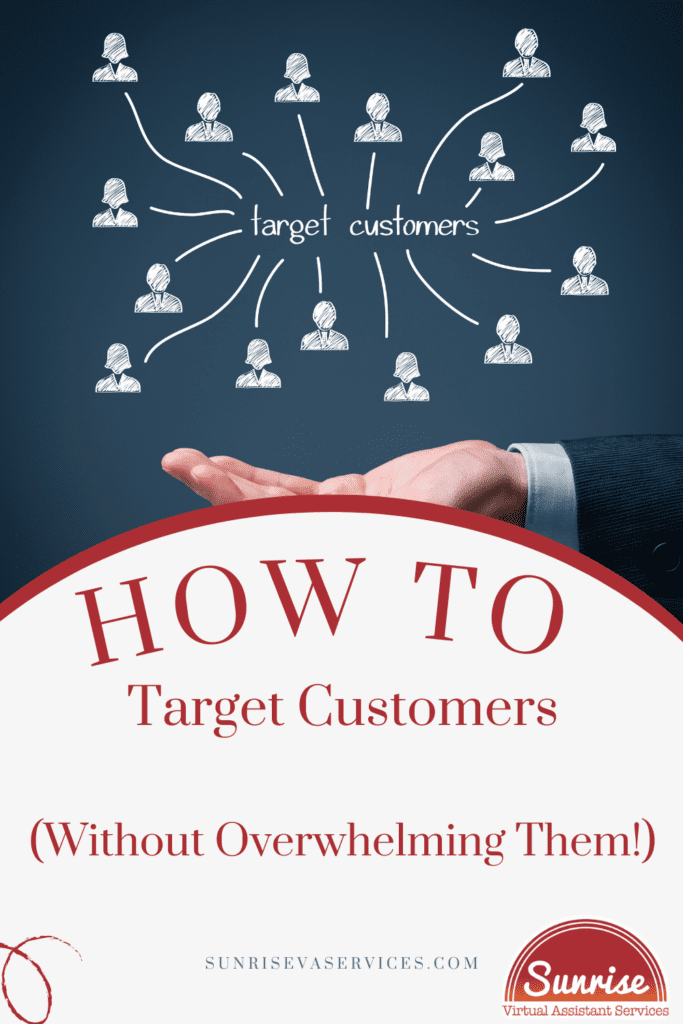Understanding how to target customers effectively is crucial for small business owners. Many businesses fail to reach their audience because they drown them in unnecessary information.
Here, we will guide you through effective techniques that ensure your message is clear and impactful. Say goodbye to confusing messages and hello to clarity!
Keep reading to learn how to target your marketing campaigns without creating overwhelm…
Understanding Your Customer Base Through Data Analysis and Feedback
The first step in effective customer targeting is understanding your customer base. Small business owners and marketers can achieve this through thorough data analysis and feedback collection of their current customers.
Data analysis allows you to identify customer patterns, preferences, and behaviors. Tools like Google Analytics, CRM systems, and social media insights can provide valuable data.
Key Strategies:
- Survey and Feedback Forms: Focus groups work! Directly ask your customers about their preferences through engaging email surveys and feedback forms.
- Analyze Purchase History: Look at what your customers buy, how often, and in what combination to identify trends and gain valuable insights.
- Social Media Listening: Monitor your niche competitors’ social media channels to understand what your prospective customers are talking about and what they care about. We call these our ‘social listening ears!’
Tailoring Your Marketing Approach to Specific Customer Segments
Once you clearly understand your customer base, the next step is to segment your customers into specific groups.
Customer segmentation allows businesses to tailor their marketing approach to different segments, ensuring their messages are relevant and engaging.
Key Strategies:
- Demographic Segmentation: Group your customers based on demographic characteristics like age, gender, income level, and education level.
- Behavioral Segmentation: Segment all customers based on their consumer behavior, such as purchase history, brand loyalty, and product usage.
- Geographic Segmentation: Target customers based on geographic location to provide more localized and relevant offers.
Implementing Personalized Marketing Strategies
Personalized marketing strategies can significantly enhance your customer targeting efforts.
With personalization, you can create a more engaging and relevant experience for your customers by delivering more refined content and social media ads.
Key Strategies:
- Email Personalization: Personalize email content, subject lines, and offers using customer data. For example, a local bakery increased sales by 30% through personalized birthday cake offers to existing customers based on their purchase history.
- Product Recommendations: Use segmentation to recommend products based on customer behavior and preferences.
- Customized Content: Create unique content that speaks directly to different customer segments’ needs, pain points, desires, and interests.
Using Automation Tools to Streamline Customer Targeting
Marketing automation tools can help streamline your customer targeting efforts and social media content, without overwhelming your resources.
These automation tools allow you to automate repetitive tasks, manage customer data, and deliver personalized content at scale.
Key Strategies:
- Email Segmentation: Use tools like Mailchimp or HubSpot to segment your growing email list and send targeted email campaigns. For example, an online clothing store utilized email segmentation to target various age groups with specific new product lines, resulting in a 20% increase in conversion rates.
- Chatbots: Ulitize chatbots on your website to engage potential customers and provide instant support. A small tech startup implemented chatbot technology, leading to a 25% increase in lead generation.
- Social Media Scheduling: Use tools like Hootsuite or Buffer to schedule and manage your social media posts regularly, ensuring consistent and targeted messaging.
Psst, want to know the three types of target audience you should be researching? Click here!
Regular Analysis and Strategy Adjustment: How to Target Customers Effectively
Customer targeting is not a one-time task. Regular analysis and adjustments are required to ensure that your strategies remain effective.
You can improve your targeting efforts by continuously monitoring your email or social media campaigns, and customer feedback, to make better data-driven decisions.
Key Strategies:
- A/B Testing: Conduct A/B tests to compare different marketing strategies and identify what works best.
- Performance Metrics: Monitor key campaign metrics, such as conversion rates, click-through rates, and customer engagement.
- Customer Feedback: Regularly collect and analyze your customer feedback to understand their ever-evolving needs and preferences.
Examples of Successful Marketing Efforts
Let’s take a closer look at how one business was able to raise their brand awareness and increase their sales through a specific type of content within their marketing plan
Case Study: A Paint Party Studio
Creative Expressions, a local paint party studio, successfully marketed its private party offerings by implementing a targeted social media campaign that carefully balanced frequency with value.
Instead of flooding their audience with constant promotion, they strategically scheduled posts on various social media platforms that highlighted the unique experiences their private parties offer, such as customizable themes and special group packages.
Each week, Creative Expressions featured a “Customer Spotlight” post showcasing successful private events at the studio, complete with testimonials and vibrant photos of guests enjoying their painting sessions. The “Customer Spotlight” marketing strategy provided social proof and inspired potential customers to envision their own gatherings at the studio.
Moreover, Creative Expressions utilized Instagram Stories to run quick polls asking followers about their favorite painting themes and which special event categories they would like to explore, ensuring engagement without overwhelming their main feed.
By creating a sense of community with relevant content, the studio can make their audience feel involved in the conversation. Creative Expressions increased inquiries for private paint parties by 40% over two months while maintaining a clear and engaging social media presence through their targeted marketing messages.
Conclusion
Targeting customers is essential for small businesses looking to grow their business without overwhelming their audience. You can achieve outstanding results by understanding your customer base, customizing your marketing approach, implementing personalized strategies, utilizing automation tools, and regularly analyzing your efforts.
Ready to take your customer targeting to the next level? If you need expert assistance refining your customer targeting strategies, contact us at Sunrise Virtual Assistant Services and book a consultation with our team of social media marketing professionals.
We are here to help you achieve your business goals with targeted advertising, target market analysis, and more!


